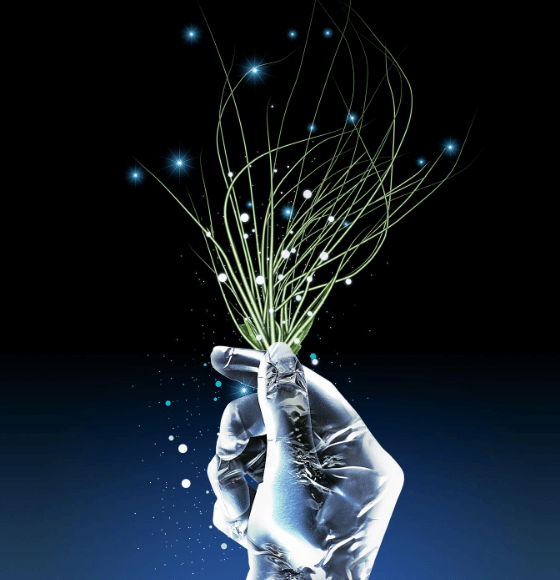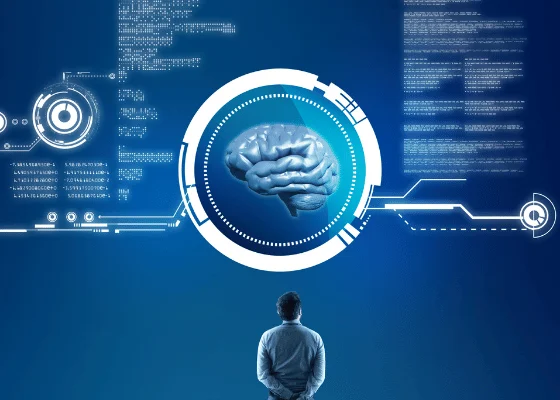The AI Revolution Comes to Your Computer: Anthropic Claude 3.5 Sonnet and "Computer Use"
November 5, 2024
Table of Contents
Artificial intelligence is one of the fastest growing and most transformative technologies of our time. In this field where we encounter new developments every day, Anthropic’s Claude models play a leading role. The “Computer Use” feature, which is available in the beta version of the Claude 3.5 Sonnet model, takes the capabilities of artificial intelligence to a whole new level. This feature has the potential to revolutionize the way AI interacts with computers.
We are no longer limited to text-based commands. Thanks to “Computer Use,” Claude 3.5 Sonnet can use your computer just like a human. It can understand the information on your screen, control the mouse cursor, perform clicks, and enter text from the keyboard. In short, it can perform all the actions we need to interact with the digital world. This means that AI can play a much more active role in our daily lives and workflows.
With the “Computer Use” feature, AI is no longer just a chatbot, but also a digital assistant. It can complete tasks on your behalf, conduct research, organize data, and even generate creative content. This saves us time, increases our productivity, and allows us to focus on more strategic work.
In this blog post, we will take an in-depth look at the “Computer Use” feature of Anthropic Claude 3.5 Sonnet, how it works, its potential applications, and its advantages. We will also touch on important issues such as security, privacy, and ethics that come with this new technology.
If you’re ready, let’s explore this new chapter that AI has opened in computer use!
1. What is “Computer Use” and How Does it Work?
The “Computer Use” feature of Anthropic Claude 3.5 Sonnet is a revolutionary innovation that allows AI to use your computer just like a human. So how is this possible? Here are the mechanisms behind this feature:
1. What is “Computer Use” and How Does it Work?
The “Computer Use” feature of Anthropic Claude 3.5 Sonnet is a revolutionary innovation that allows AI to use your computer just like a human. So how is this possible? Here are the mechanisms behind this feature:
1.1. Visual Perception and Understanding:
Thanks to its advanced computer vision capabilities, Claude can “see” and understand everything on your screen. Just like the human eye, it can perceive pixels, shapes, colors, and text. But Claude does more than that. Thanks to optical character recognition (OCR) technology, it can read and understand text in images. This means it can process text on web pages, information in documents, and even text in images.
1.2. Language Understanding and Interpretation:
Claude doesn’t just “see,” it also “understands.” Thanks to its powerful natural language processing (NLP) capabilities, it can understand the instructions and commands you give. These instructions can be simple commands like “Open the file” or complex instructions like “Research the best coffee machines on the internet and prepare a report for me.” Claude interprets these instructions to determine what actions it needs to perform.
1.3. Action Planning and Execution:
After understanding the instructions, Claude creates an action plan. This plan includes which programs to open, which websites to visit, which keys to press, and which texts to type. Then, just like a human, it uses the mouse and keyboard to perform these actions.
1.4. API Integration:
The “Computer Use” feature is offered to developers via API. This allows developers to integrate Claude’s capabilities into their own applications and platforms. For example, an e-commerce site can use Claude to provide product recommendations to customers, or a social media platform can use Claude to generate content for users.
In summary, the “Computer Use” feature works through a combination of Claude’s visual perception, language understanding, and action planning capabilities. This feature has the potential to revolutionize many fields by ushering in a new era in the way AI interacts with computers.
2. What Can Be Done with “Computer Use”?
Anthropic Claude 3.5 Sonnet’s “Computer Use” feature offers you a wide range of possibilities in interacting with your computer and performing various tasks. Here are some of the things you can do with Claude:
2.1. Web Browsing and Research:
- Targeted Information Gathering: Need information on a specific topic? Tell Claude what you’re looking for and let it do the rest. It can research for you on the internet, find relevant websites, and gather the information you want.
- Comparison and Analysis: Want to compare products, services, or different topics? Claude can gather information from different sources for you, analyze it, and provide you with a summary report.
- Academic Research: Are you doing academic research? Claude can search for articles, books, and other academic resources, collect citations, and even create a bibliography.
2.2. Data Analysis and Reporting:
- Data Collection and Organization: Collecting, organizing, and analyzing data from different sources can be a time-consuming task. Claude can automate this process, saving you time.
- Creating Graphs and Tables: To make data more understandable, Claude can create graphs and tables for you.
- Trend Analysis: Claude can identify trends and patterns in data, providing you with valuable insights.
2.3. Content Creation:
- Writing: You can get help from Claude to write blog posts, articles, social media posts, emails, and even creative stories.
- Translation: You can use Claude to translate text into different languages.
- Presentation Preparation: You can get support from Claude to create presentations, add visuals, and edit text.

2.4.Automation:
- Automating Repetitive Tasks: You can delegate repetitive tasks such as replying to emails, filling out forms, and scheduling appointments to Claude.
- Optimizing Workflows: Claude can help you increase your productivity by automating your workflows.
- Personal Assistant: You can use Claude for personal assistant tasks such as setting reminders, setting alarms, and checking the weather.
2.5. Entertainment:
- Playing Games: Claude can play simple games for you and even help you with game strategies.
- Music and Video Control: You can use Claude to play music, watch videos, and create playlists.
These examples represent only a small portion of what you can do with the “Computer Use” feature. As AI technologies continue to evolve, Claude’s capabilities will increase and new use cases will emerge.
3. In Which Fields Can “Computer Use” Be Used?
Anthropic Claude 3.5 Sonnet’s “Computer Use” feature has the potential to revolutionize many different sectors and fields. AI’s ability to use computers can be used to automate business processes, increase efficiency, and create new opportunities. Here are some areas and examples where the “Computer Use” feature can be used:
3.1. Education:
- Personalized Learning: Claude can create customized lesson plans based on students’ learning styles and needs, assist with their homework, and track their learning progress. For example, if a student is struggling with math, Claude can identify the areas where the student is lacking and provide additional exercises and resources focused on those areas.
- Accessibility: Claude can make computer use easier for visually impaired or physically disabled students. For example, it can read text aloud, control screen readers, and allow students to interact with computers.
- Teacher Assistant: Claude can assist teachers with tasks such as preparing lesson materials, grading assignments, and tracking student performance. This allows teachers to spend more time interacting with students one-on-one and on strategic tasks such as lesson planning.
3.2. Healthcare:
- Analyzing Patient Data: Claude can analyze large amounts of patient data to assist doctors in diagnosing and treating diseases. For example, it can analyze a patient’s symptoms and medical history to identify possible diagnoses and suggest treatment options.
- Drug Development: Claude can assist researchers in the drug development process. It can identify new drug candidates, analyze clinical trials, and evaluate the efficacy and safety of drugs.
- Patient Monitoring: Claude can remotely monitor patients’ health conditions, remind them to take their medications, and schedule their appointments.
3.3. Customer Service:
- 24/7 Support: Claude can provide 24/7 service to answer customer questions and resolve issues.
- Personalized Service: It can provide personalized service by analyzing customers’ past interactions and preferences.
- Multilingual Support: It can serve a wider audience by providing service in different languages.
3.4. Finance:
- Risk Analysis: Claude can analyze financial data to assess investment risks and help investors make more informed decisions.
- Fraud Detection: It can be used to detect fraud in the banking and finance industry.
- Portfolio Management: It can create and manage personalized portfolios for investors.
3.5. Law:
- Legal Research: It can assist lawyers with their legal research, find relevant laws and regulations, and analyze case files.
- Contract Review: It can review contracts, analyze clauses, and identify potential risks.
3.6. Human Resources:
- Evaluating Job Applications: It can review job applications, evaluate candidates, and manage recruitment processes.
- Training and Development: It can create training programs for employees and track their development.
These examples show only a small portion of the potential use cases for the “Computer Use” feature. As AI technologies continue to evolve, Claude’s capabilities will increase and it will be used in more areas.
4. Points to Consider Regarding “Computer Use”
While Anthropic Claude 3.5 Sonnet’s “Computer Use” feature is a major advance in the field of artificial intelligence, there are some important points to consider. To use this technology safely and ethically, we need to consider the following:
4.1. Security:
- Access Control: Since Claude will have access to your computer, it is important to limit what information and resources it can access. You should take necessary precautions to protect sensitive files and information.
- Authorization: It is important to determine what actions Claude can perform and limit its authority. For example, you can prevent Claude from deleting files or installing programs without your permission.
- Protection from Malware: To prevent Claude from infecting your computer with malware, you should use a reliable antivirus program and update your software regularly.

4.2. Privacy:
- Data Privacy: Since Claude can see the information on your screen, it is important to protect your personal and sensitive information. You should be especially careful when sharing financial information, health information, and identity information.
- Data Sharing: It is important to understand what data Claude can collect and how it will use this data. Carefully review data sharing policies and take steps to anonymize your data if necessary.
4.3. Ethics:
- Unemployment: AI systems like Claude have the potential to take over some jobs by automating them. Therefore, it is important to carefully assess the impact of AI on the workforce and take necessary measures.
- Discrimination: AI systems can reflect biases in the data they are trained on. This could cause Claude to discriminate. Therefore, it is important to take the necessary steps to ensure that Claude works fairly and impartially.
- Misinformation: Claude may produce false or misleading information. Therefore, it is important to verify the information Claude provides and confirm it from reliable sources.
4.4. Responsibility:
- Errors: Claude is an AI system that is still under development and can make mistakes. Therefore, it is important to be responsible for Claude’s actions and correct any errors.
- Terms of Use: Carefully read and understand the terms of use before using Claude. These terms provide information on how Claude can be used and what responsibilities it bears.
By taking these precautions, we can use the “Computer Use” feature safely, ethically, and responsibly and benefit from the advantages offered by artificial intelligence.
5. “Computer Use” in the Future
The “Computer Use” feature represents the beginning of a new era in the field of artificial intelligence. AI’s ability to use computers will have an even greater impact on all areas of our lives in the future. Here are some predictions on how the “Computer Use” feature might evolve in the future:
5.1. More Advanced Capabilities:
- Performing Complex Tasks: In the future, AI systems like Claude will be able to perform much more complex tasks. For example, they will be able to work alongside humans in areas such as software development, data analysis, and financial modeling.
- Contextual Understanding: Claude will be able to understand more complex instructions and produce more accurate results by improving its contextual understanding.
- Learning and Adaptation: Claude will be able to continuously improve itself by learning from its experiences and adapting to new information.
5.2. New Use Cases:
- Personalized Experiences: Claude will be able to provide personalized experiences by understanding users’ preferences and needs. For example, it will be able to offer personalized training programs, healthcare services, and shopping recommendations.
- Smart Homes and Cities: Claude can be used to control and manage devices in smart homes and cities. For example, it can control the lighting, heating, and security systems in your home.
- Virtual Assistants: Claude can be used to create more advanced and capable virtual assistants. These assistants can be used to perform daily tasks, provide information, and even offer emotional support.

5.3. Human-Computer Interaction:
- More Natural Interaction: Claude will be able to interact with humans in a more natural way. It will be able to understand voice commands, interpret facial expressions, and even perceive emotions.
- Augmented Reality and Virtual Reality: Claude can be used in augmented reality and virtual reality environments, allowing users to interact with these environments.
The “Computer Use” feature demonstrates the potential of artificial intelligence and provides clues as to how it might change our lives in the future. It is important to closely follow the development of this technology and be prepared to take advantage of its potential benefits.
Conclusion: A New Era in Artificial Intelligence and Computer Use
Anthropic Claude 3.5 Sonnet and the “Computer Use” feature are one of the most important indicators that artificial intelligence is no longer just a science fiction concept but a part of our daily lives. Now, AI is not only answering our questions, but also using our computers to perform tasks on our behalf. This has the potential to radically change the way we work, learn, and even interact with the world.
Thanks to the “Computer Use” feature, Claude 3.5 Sonnet can help people in many areas:
- Time Saving: It can save us time by automating repetitive and time-consuming tasks.
- Increased Productivity: It can increase our productivity by optimizing business processes and allowing us to focus on more strategic work.
- Better Decisions: It can help us make more informed decisions by analyzing large datasets and gathering information from different sources.
- Accessibility: It can increase accessibility for people who have difficulty using computers.
However, there are also some challenges and risks brought by this new technology. It is very important to pay attention to issues such as security, privacy, and ethics, and to use the “Computer Use” feature responsibly and consciously.
AI technologies continue to evolve rapidly, and the capabilities of models like Claude are increasing. We can predict that the “Computer Use” feature will become even more widespread in the future and have a greater impact on all areas of our lives.
Therefore, it is important for all of us to be informed about artificial intelligence and the “Computer Use” feature, to take advantage of the potential benefits of this technology, and to be prepared for potential risks. Adapting to this new era and learning to work with AI will be critical to our future success.
